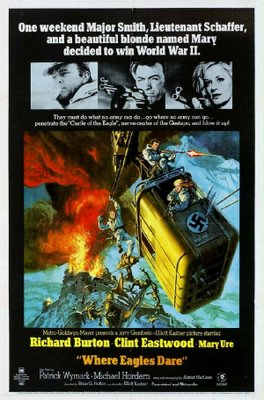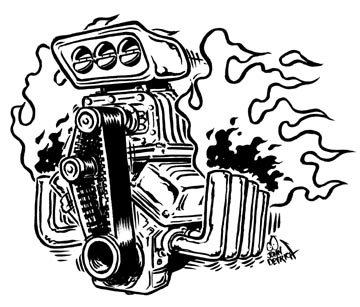 You know, that artificial heart valve was a pretty neat trick. The Panama Canal's kinda cool. And I'm a big fan of the polio vaccine. But when it comes to us humans really getting something right, there's no better example than "Where Eagles Dare" (1969).
You know, that artificial heart valve was a pretty neat trick. The Panama Canal's kinda cool. And I'm a big fan of the polio vaccine. But when it comes to us humans really getting something right, there's no better example than "Where Eagles Dare" (1969).It's got an intricate plot. Pretty scenery. Nasty villains. A truly great actor. An icon. A wonderful score. And, best of all, lots (and lots) of violence. [And for the more snobbish among us, there's a little Shakespeare thrown in for good measure: the title's from Richard III: "The world is grown so bad, that wrens make prey where eagles dare not perch."]
It's my favorite movie. Has been since I first saw it back in 1974. And I'm a little embarrassed (but at the same time, oddly proud) to admit I've seen it more than 75 times. That's more than 200 hours of my life dedicated to watching Clint Eastwood and Richard Burton put a major dent in the Nazi Party. Time well spent.
A perfectly over-the-top World War II action picture, "Where Eagles Dare" concerns a team of British commandos (and one American) parachuting behind enemy lines to rescue a kidnapped American general. Or something like that. There are a number of doublecrosses and plot twists along the way to keep us guessing. But the plot is never so complicated it distracts from all the action. Director Brian G. Hutton keeps things moving so fast, it feels like a 15-chapter Republic serial spliced end to end. One incredible setpiece follows another, all courtesy of stunt coordinator Yakima Canutt.
It's all nonsense—and that's a compliment. The bullets fly fast and furious, many of them coming from Eastwood. All kinds of stuff blows up in glorious fashion: buildings, airplanes, bridges, you name it. And your typical war movie dialogue—"Broadsword calling Danny Boy"—is elevated to high art by Richard Burton. I'd listen to Burton read the phone book. (By the way, towards the end of the film, as he drives the bus to the airfield, he looks a little tipsy.)
There are a number of mistakes and goofs along the way. Various types of military equipment that didn't exist at the time. Reflections of the camera crew showing up in windows. Bullet holes appearing and disappearing. And some rather 1969-ish haircuts worn by men in uniform. But who cares? It's all part of the fun. And since the whole film moves so fast, you don't notice stuff like that till you've seen it something like 57 times. Trust me.


No comments:
Post a Comment